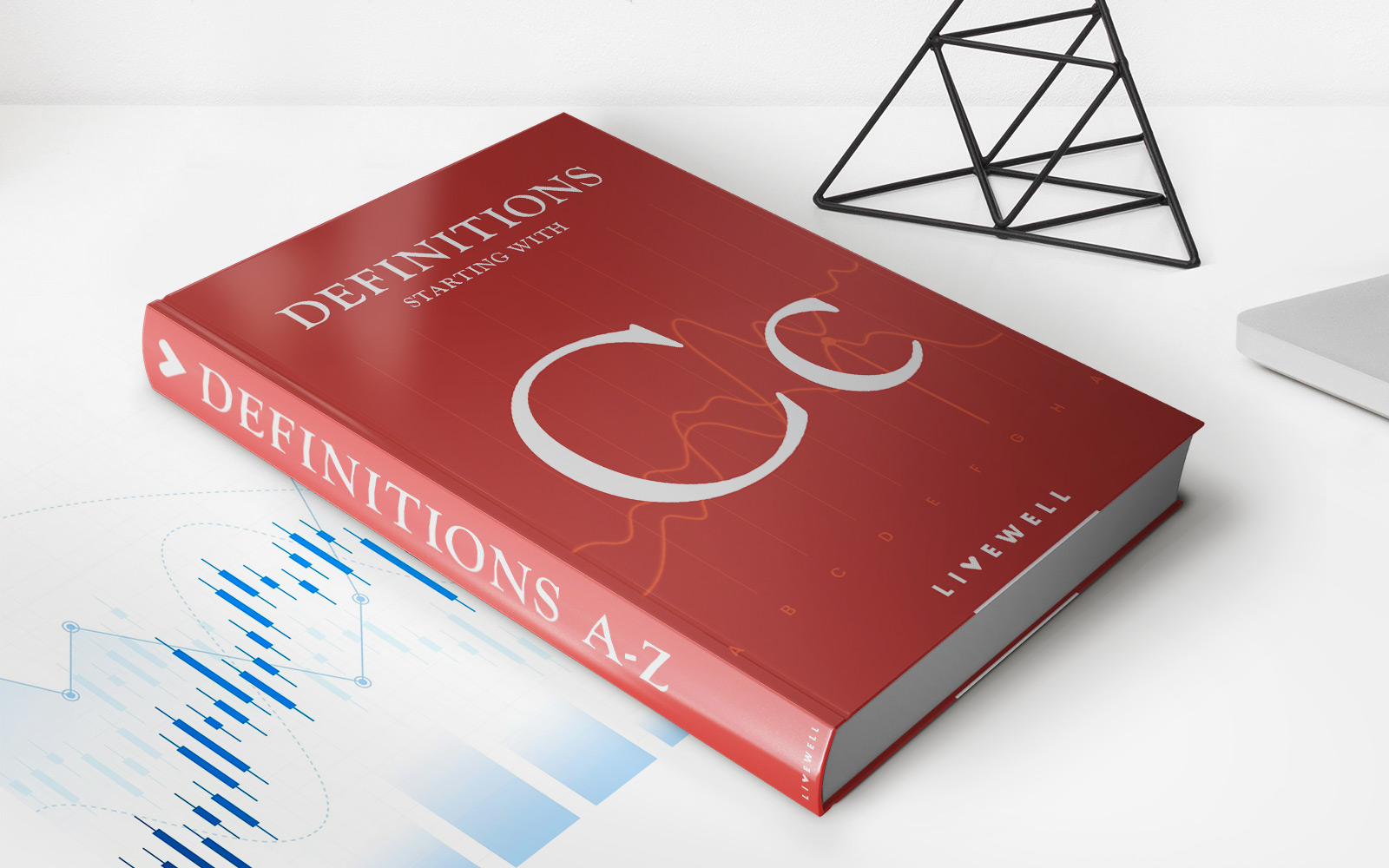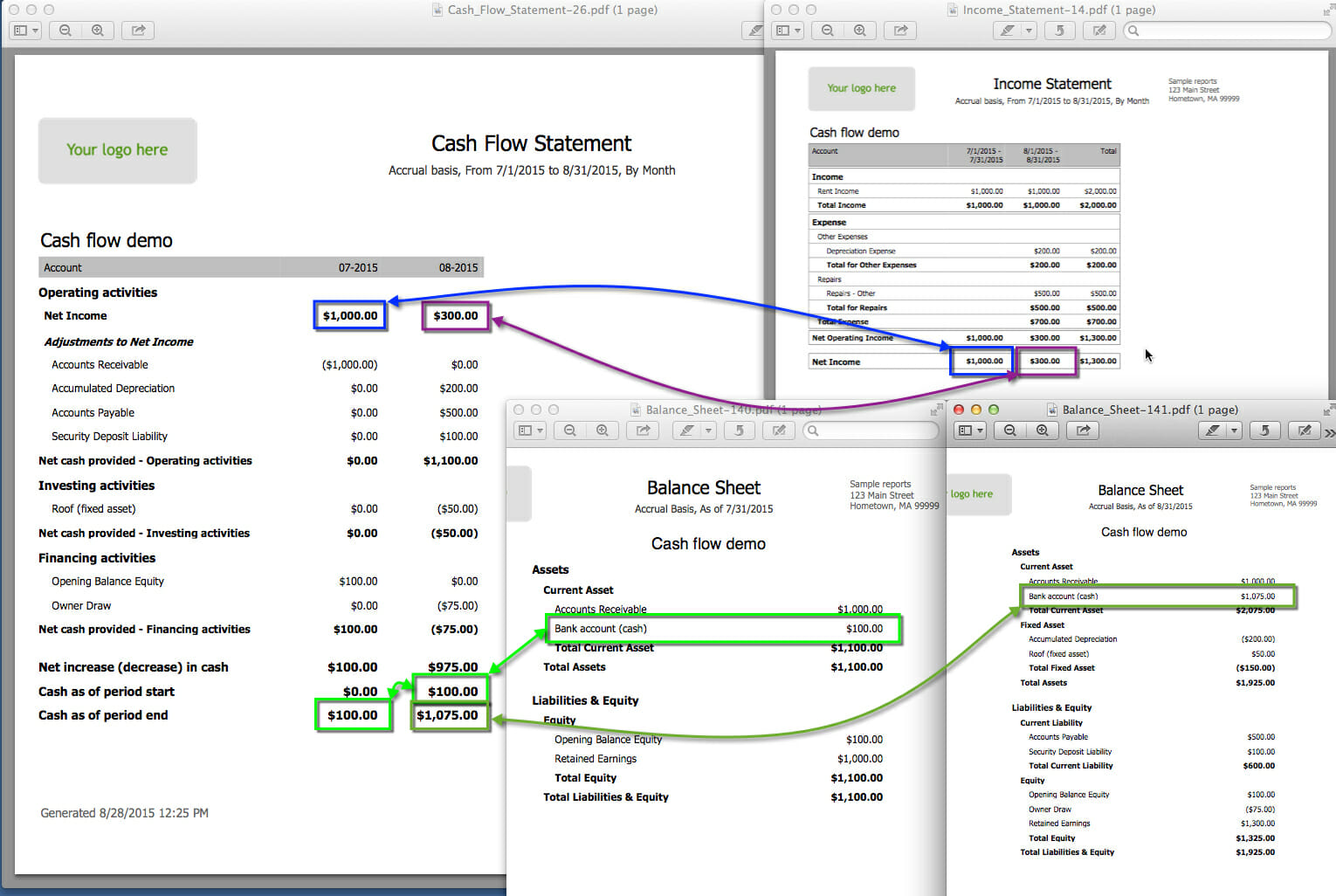

Finance
What Is A Closed End Credit Account
Modified: February 21, 2024
Learn about closed end credit accounts in the world of finance and how they can impact your financial situation.
(Many of the links in this article redirect to a specific reviewed product. Your purchase of these products through affiliate links helps to generate commission for LiveWell, at no extra cost. Learn more)
Table of Contents
- Introduction
- Definition of a closed-end credit account
- Characteristics of a closed-end credit account
- Examples of closed-end credit accounts
- Advantages of closed-end credit accounts
- Disadvantages of closed-end credit accounts
- How to qualify for a closed-end credit account
- Managing a closed-end credit account effectively
- Conclusion
Introduction
A closed-end credit account is a type of loan or credit agreement that has a fixed term and a predetermined repayment schedule. Unlike a revolving credit account, such as a credit card, a closed-end credit account is typically used for specific purchases or financial needs, such as a car loan or a mortgage. In a closed-end credit account, the borrower receives a lump sum of money from the lender, which is then repaid over a set period of time, typically with fixed monthly payments.
Closed-end credit accounts offer borrowers a structured and disciplined approach to managing their financial obligations. By knowing the exact amount of each payment and the total repayment period, borrowers can plan their finances accordingly and budget effectively. Additionally, lenders are often more willing to offer lower interest rates on closed-end credit accounts compared to other forms of credit, as these accounts are secured by specific assets like a car or a house.
In this article, we will delve deeper into the concept of closed-end credit accounts, exploring their definition, characteristics, advantages, and disadvantages. We will also discuss how to qualify for a closed-end credit account and provide useful tips for managing one effectively. Whether you are considering applying for a closed-end credit account or simply want to better understand this type of credit, this article will provide you with valuable insights to help you make informed financial decisions.
Definition of a closed-end credit account
A closed-end credit account is a financial arrangement in which a borrower receives a specific amount of money from a lender for a specific purpose and agrees to repay the loan over a fixed period of time. The borrower does not have the flexibility to borrow additional funds once the account is established or repay the loan at their own pace.
Unlike a credit card or a line of credit, where the borrower can repeatedly borrow and repay funds within a set credit limit, a closed-end credit account operates on a one-time loan basis. Once the loan is approved and funded, the account is closed, and no further borrowing is permitted.
The terms of a closed-end credit account are predetermined, including the loan amount, interest rate, repayment period, and monthly payment amount. The repayment schedule is typically structured to repay the loan in equal installments over the agreed-upon duration.
Common examples of closed-end credit accounts include auto loans, mortgages, personal loans, and student loans. In each case, the borrower receives a specific amount of money from the lender, which is used for a specific purpose, such as purchasing a car, buying a home, covering educational expenses, or consolidating debt.
It is important to note that closed-end credit accounts are distinct from open-end credit accounts, such as credit cards or lines of credit. Open-end credit accounts allow the borrower to borrow and repay funds multiple times, up to a certain credit limit, without a predetermined repayment schedule.
Overall, a closed-end credit account provides borrowers with a structured borrowing option, allowing them to access funds for specific needs while knowing the exact terms of repayment. This can help individuals better plan their finances and manage their debt responsibly.
Characteristics of a closed-end credit account
Closed-end credit accounts have several distinct characteristics that set them apart from other types of credit. Understanding these characteristics is crucial for borrowers considering a closed-end credit account. Here are the key features of a closed-end credit account:
- Fixed loan amount: In a closed-end credit account, the borrower receives a specific loan amount from the lender. This amount is predetermined based on the borrower’s needs and the lender’s criteria. Unlike open-ended credit accounts, the borrower cannot borrow additional funds once the loan is disbursed.
- Fixed repayment period: Closed-end credit accounts have a fixed repayment period, meaning that the borrower must repay the loan within a specific time frame. The repayment period can vary depending on the type of loan and the lender’s terms. For example, a car loan may have a repayment period of 5 years, while a mortgage can extend for 15 or 30 years.
- Fixed interest rate: Unlike some forms of credit, such as adjustable-rate mortgages or credit cards with variable interest rates, closed-end credit accounts often come with a fixed interest rate. This means that the interest rate remains constant throughout the repayment period, providing borrowers with predictability in their monthly payments.
- Structured repayment schedule: Closed-end credit accounts require borrowers to make regular payments over the course of the loan term. These payments are typically equal installments, consisting of both principal and interest. The structured repayment schedule allows borrowers to budget effectively and know the exact amount they need to pay each month.
- Secured or unsecured: Closed-end credit accounts can be secured or unsecured. Secured accounts require collateral, such as a car or a house, which the lender can seize if the borrower fails to repay the loan. Unsecured accounts do not require collateral but often come with higher interest rates to compensate for the increased risk for the lender.
These characteristics make closed-end credit accounts a reliable option for borrowers who have specific financial needs and prefer a structured repayment plan. The fixed terms and predictable payments allow borrowers to better plan their finances and ensure timely loan repayment.
Examples of closed-end credit accounts
Closed-end credit accounts come in various forms, each tailored to meet specific financial needs. Here are some common examples of closed-end credit accounts:
- Auto loans: Auto loans are a popular type of closed-end credit account used to finance the purchase of a vehicle. Borrowers receive a loan for the purchase price of the car, and they repay it over a fixed term, typically ranging from 3 to 7 years. The car itself serves as collateral for the loan.
- Mortgages: Mortgages are closed-end credit accounts used for purchasing homes or other real estate properties. Borrowers receive a loan to cover the cost of the property, and they repay it over a long-term period, usually 15 to 30 years. The property being purchased serves as collateral for the mortgage.
- Personal loans: Personal loans are versatile closed-end credit accounts that can be used for various purposes, such as debt consolidation, home improvement, or funding a special event. Borrowers receive a lump sum and repay it over a fixed period, typically ranging from 1 to 5 years. Personal loans can be either secured or unsecured, depending on the borrower’s credit history and the lender’s requirements.
- Student loans: Student loans are specifically designed to finance higher education expenses. Borrowers receive funds to cover tuition, books, and living expenses, and they repay the loan over a fixed period of time, often after completing their education. Student loans can be offered by the government or private lenders and typically have favorable interest rates and repayment terms.
- Business loans: Closed-end credit accounts are also available for small businesses or entrepreneurs in need of capital. Business loans can be used for various purposes, such as purchasing equipment, expanding operations, or financing a project. These loans have fixed repayment terms and may require collateral or a personal guarantee from the borrower.
These are just a few examples of closed-end credit accounts, and there are other types available for specific needs and circumstances. It’s important to carefully evaluate the terms, interest rates, and repayment options offered by different lenders to choose the most suitable closed-end credit account for your financial goals.
Advantages of closed-end credit accounts
Closed-end credit accounts offer several advantages for borrowers in comparison to other types of credit. Understanding these advantages can help individuals make informed decisions when considering a closed-end credit account. Here are some key benefits:
- Structured repayment: One of the main advantages of closed-end credit accounts is the structured repayment plan. Borrowers know the exact amount they need to repay each month, making it easier to budget and manage their finances. The fixed repayment schedule brings stability and predictability to loan repayment.
- Predictable interest rates: Closed-end credit accounts often come with fixed interest rates. This means that the interest rate remains constant throughout the repayment period, regardless of any fluctuations in market rates. Knowing the exact interest rate allows borrowers to accurately calculate their monthly payments and plan their finances accordingly.
- Potential for lower interest rates: Compared to open-ended credit accounts, closed-end credit accounts may offer lower interest rates. This is because closed-end credit accounts are typically secured by specific assets, such as a car or a house. Lenders view these accounts as lower-risk since they can repossess the collateral in case of default. Lower interest rates can result in significant savings over the life of the loan.
- Controlled borrowing: Closed-end credit accounts provide borrowers with a specific loan amount upfront. This helps individuals avoid excessive borrowing and encourages responsible financial behavior. Rather than having continuous access to a credit limit, closed-end credit accounts promote calculated borrowing and prevent users from accumulating excessive debt.
- Potential credit score improvement: Successfully repaying a closed-end credit account can positively impact credit scores. By making regular, on-time payments, borrowers demonstrate their creditworthiness and responsibility. This can lead to an improved credit history and potentially better borrowing terms for future loans or credit applications.
In summary, closed-end credit accounts offer structured repayment plans, predictable interest rates, potential for lower rates, controlled borrowing, and the opportunity to improve credit scores. These advantages make closed-end credit accounts an attractive option for individuals who prefer budgeting and want to build a positive credit history while fulfilling their specific financial needs.
Disadvantages of closed-end credit accounts
While closed-end credit accounts have their advantages, it is important to also consider the potential drawbacks that borrowers may face. Understanding these disadvantages can help individuals make informed decisions when considering a closed-end credit account. Here are some of the main disadvantages:
- Limited flexibility: Unlike open-ended credit accounts, closed-end credit accounts do not allow for additional borrowing once the loan is disbursed. This lack of flexibility can be a disadvantage for individuals who may have changing or unforeseen financial needs during the loan term.
- Prepayment penalties: Some closed-end credit accounts may impose prepayment penalties if borrowers choose to repay the loan before the predetermined schedule. These penalties can negate the advantage of paying off the loan early and can add additional costs for borrowers.
- Potential collateral risk: Closed-end credit accounts that require collateral, such as a car or a house, expose borrowers to the risk of losing their assets if they fail to make loan payments. Defaulting on a closed-end credit account can result in repossession or foreclosure, which can have significant financial and emotional consequences.
- Higher interest rates for unsecured loans: If a closed-end credit account is unsecured, without collateral, borrowers may face higher interest rates compared to secured accounts. Lenders charge higher rates on unsecured loans to compensate for the increased risk they assume when lending without collateral.
- Inflexible terms: Closed-end credit accounts have fixed terms, including the repayment period and monthly payment amounts. While this offers stability, it may not be suitable for individuals who experience financial fluctuations or wish to have more control over their repayment schedule.
It is crucial for borrowers to carefully assess their financial situation and consider these potential disadvantages before committing to a closed-end credit account. Understanding the limitations and risks associated with these accounts can help individuals make a well-informed decision and choose the most suitable form of credit for their needs.
How to qualify for a closed-end credit account
To qualify for a closed-end credit account, borrowers generally need to meet certain criteria set by lenders. While specific requirements may vary depending on the type of loan and the lender’s policies, here are some common factors that lenders consider when evaluating applicants:
- Credit history and score: Lenders typically review an applicant’s credit history and credit score to assess their creditworthiness. A higher credit score, indicating a strong credit history with timely payments and responsible borrowing, increases the chances of qualifying for a closed-end credit account. Borrowers with lower credit scores may still be eligible but may face higher interest rates or additional requirements.
- Income and employment stability: Lenders evaluate a borrower’s income to determine their ability to repay the loan. They often require proof of employment and look for a consistent income stream. Additionally, lenders may consider the borrower’s job stability and how long they have been working in their current position.
- Debt-to-income ratio: Lenders analyze a borrower’s debt-to-income ratio, which compares their monthly debt payments to their monthly income. A lower debt-to-income ratio indicates a better ability to manage additional debt and may improve the chances of qualifying for a closed-end credit account.
- Collateral: For secured closed-end credit accounts, such as auto loans or mortgages, lenders require collateral. The value and condition of the collateral play a role in the approval process, as it acts as security for the loan.
- Documentation: Borrowers are generally required to provide necessary documentation such as identification, proof of income, bank statements, and details of existing debts. These documents help lenders verify the information provided and assess the borrower’s eligibility.
It’s important for borrowers to research and compare lenders to find the ones that offer favorable terms and requirements for closed-end credit accounts. Additionally, maintaining a good credit score, demonstrating a stable income, and managing existing debts responsibly can increase the chances of qualifying for the desired closed-end credit account.
Managing a closed-end credit account effectively
Effectively managing a closed-end credit account is essential in order to fulfill financial obligations and maintain a positive credit history. Here are some tips to help borrowers manage their closed-end credit accounts effectively:
- Create a budget: Develop a comprehensive budget that includes your monthly payment for the closed-end credit account. Ensure that you allocate enough funds to cover the payment while still addressing other financial obligations.
- Pay on time: Make timely payments for your closed-end credit account. Late or missed payments can negatively impact your credit score and potentially incur late fees or penalties. Consider setting up automatic payments to ensure timely reimbursement.
- Monitor your credit: Regularly review your credit reports from the major credit bureaus to ensure accuracy and identify any potential errors. Monitoring your credit can also help you track your progress in building a positive credit history.
- Avoid additional debt: While you have a closed-end credit account, it’s wise to avoid taking on additional debt unless necessary. Taking on more debt can strain your finances and increase the risk of defaulting on your obligations.
- Communicate with your lender: If you encounter financial difficulties or anticipate challenges in making your payments, proactively communicate with your lender. They may be able to provide options such as payment extensions or revised repayment plans to help you manage your loan.
- Consider paying more than the minimum: If your financial situation allows, consider paying more than the minimum monthly payment. This can help you pay off the loan faster and reduce the overall interest paid.
- Plan for the future: As you manage your closed-end credit account, also keep an eye on your long-term financial goals. Consider how your loan fits into your overall financial plan and make adjustments as needed.
By implementing these strategies, borrowers can effectively manage their closed-end credit accounts, stay on top of their payments, and maintain a positive credit standing. Responsible management of debt is key to financial stability and achieving long-term financial goals.
Conclusion
Closed-end credit accounts offer borrowers a structured and disciplined approach to borrowing money for specific purposes. With a fixed loan amount, predetermined repayment period, and fixed interest rate, closed-end credit accounts provide stability and predictability for borrowers. Whether it’s an auto loan, mortgage, personal loan, student loan, or business loan, closed-end credit accounts serve specific financial needs and offer advantages such as structured repayment, predictable interest rates, and potential credit score improvement.
However, it’s important to consider the potential disadvantages of closed-end credit accounts, such as limited flexibility, prepayment penalties, and potential collateral risk. It’s crucial for borrowers to carefully assess their financial situation and understand the terms and requirements of closed-end credit accounts before making a commitment.
To qualify for a closed-end credit account, borrowers generally need a good credit history, stable income, and a low debt-to-income ratio. Providing the necessary documentation and meeting the lender’s criteria are important steps in the qualification process.
When managing a closed-end credit account, it’s essential to create a budget, make timely payments, monitor credit reports, avoid additional debt, communicate with the lender, and consider paying more than the minimum amount due. These practices help borrowers stay on top of their financial obligations, maintain a positive credit history, and work towards their long-term financial goals.
In conclusion, closed-end credit accounts provide individuals with a structured and regulated borrowing option. By understanding the definition, characteristics, advantages, disadvantages, qualification requirements, and effective management strategies, borrowers can make informed decisions and utilize closed-end credit accounts responsibly to meet their financial needs.














